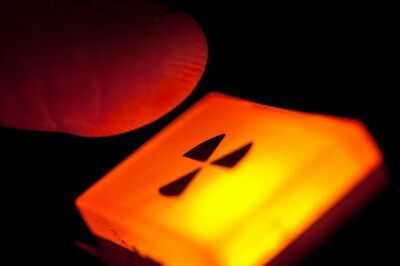A topRussian official has sparked fresh World War Three fears with a new wave of threats towards Britain.
Dmitry Rogozin, a senator and war combatant, formerly deputy premier and space agency chief, has warned that dozens of British defence-linked sites will be targeted as he plots out more than 20 locations in the UK that could come under attack.
As part of Russia's latest warning, Rogozin has shared a map of 23 defence sites. The locations consist of both military and industrial sites across all four nations of the UK.
Rogozin took the map from the UK government's policy paper 'Defence Industrial Strategy 2025: Making Defence an Engine for Growth'. The chilling threat comes after former British defence secretary Ben Wallace called for "making Crimea uninhabitable and unviable from a Russian point of view" this week.
READ MORE: Top Russian official posts map of 23 UK sites that 'could be destroyed'
READ MORE: WW3 fears grow as experts map minute by minute reality if Putin bombed UK city
Propagandist Vladimir Solovyov - whose TV rants are scripted by the Kremlin - said: "Dmitry Rogozin today posted a reminder of targets in Britain that could be destroyed first. The idiots will get what's coming to them, they'll just get what's coming to them."
While it's thankfully still unlikely that Russia will unleash such horrors on the UK, the latest threats have naturally left Brits wondering what a nuclear strike would look like, and what steps could be taken to attempt at least some chance of survival.
Dr Arnab Basu, CEO of Kromek Group plc, told the Mirror last month: "If a nuclear strike were launched on a UK city, residents would likely be given some warning.
"For those outside the immediate blast zone, the priority is to get to shelter quickly, ideally the most central part of a building. Seal windows and doors with tape to reduce radioactive dust entering.

"Fill every possible container with water, such as sinks and bathtubs, as water supplies are likely to be contaminated after the explosion."
And while many would be tempted to flee in search of the safest possible place, Dr Basu, who has previously authored a White Paper on "rethinking our readiness for rapid response radiation monitoring in the face of nuclear incidents", has advised this may not be the wisest move.
He urged: "For the next two to three days, remain indoors, preferably in the most central part of your shelter, away from exterior walls and windows. Survival depends less on fleeing and more on shielding yourself from fallout, limiting exposure and relying on stored resources until immediate radiation levels begin to fall."
Meanwhile, when it comes to the safest areas to be should the worst happen, The International Commission on Radiological Protection (ICRP) states: "The best way to protect you and your family before, during, and after a nuclear blast is getting inside the centre of a building or basement.
"On August 6, 1945, Mr Eizo Nomura was in the basement of a building in Hiroshima, about 170 meters from ground zero. He survived the atomic bombing and died in 1982 at the age of 84. Most people within a few hundred metres of a nuclear detonation are not likely to survive, especially if unprepared.

"Be inside before the fallout arrives. After a detonation, you will have 10 minutes or more to find an adequate shelter before fallout arrives. If a multi-story building or a basement can be safely reached within a few minutes of the explosion, go there immediately. The safest buildings have brick or concrete walls. Underground parking garages and subways can also provide good shelter."
Given this advice, many would naturally assume that London, with its extensive underground network, would be the safest place, with the tube tunnels having allowed some protection from blasts during the dark days of the Blitz.
However, some experts fear that modern nuclear weapons could penetrate much further than the bombs of World War II, meaning even the 58-metre-deep Hampstead station would still be too close to the surface.

Andrew Futter, a Professor of International Politics at the University of Leicester, previously told My London that the Underground "probably wouldn't be deep enough if there was a direct hit".
Therefore, should a nation such as Russia target one of the UK's major cities - from London to Edinburgh - being outside of the blast zone would present the best chance of survival.
When it comes to the reach of nuclear blasts, several factors must be considered, including a radiation radius of 153 km2, a fireball radius of approximately 197 km2, an air blast radius between 321 km2 and 1,420 km2, and a thermal radiation radius of 12,960 km2.
Although these distances can vary depending on weather conditions, property researchers have previously compiled a list of places that could provide relative safety in this nightmare scenario. These 20 locations, listed by property portal EMoov back in 2017, are situated outside of the immediate range of blasts in major British cities:
However, some of these areas are still close enough to blast sites to be affected by radiation swept over by winds. Therefore, the remote island Foula, on the Shetland Isles, could well be the safest place in the UK in this instance.
You may also like

Gaza peace plan: Netanyahu says negotiators to head to Egypt for talks; pins hope to bring hostages back 'in coming days'

A foregone conclusion: India seek another dominant win over Pakistan in Women's World Cup

Chelsea boss Enzo Maresca sent off for wild celebration after Estevao winner vs Liverpool

Strictly Come Dancing's Amy Dowden admits 'life's too short' after cancer battle

Bhopal News: Banned Meat Seized From SUV, Driver Arrested







